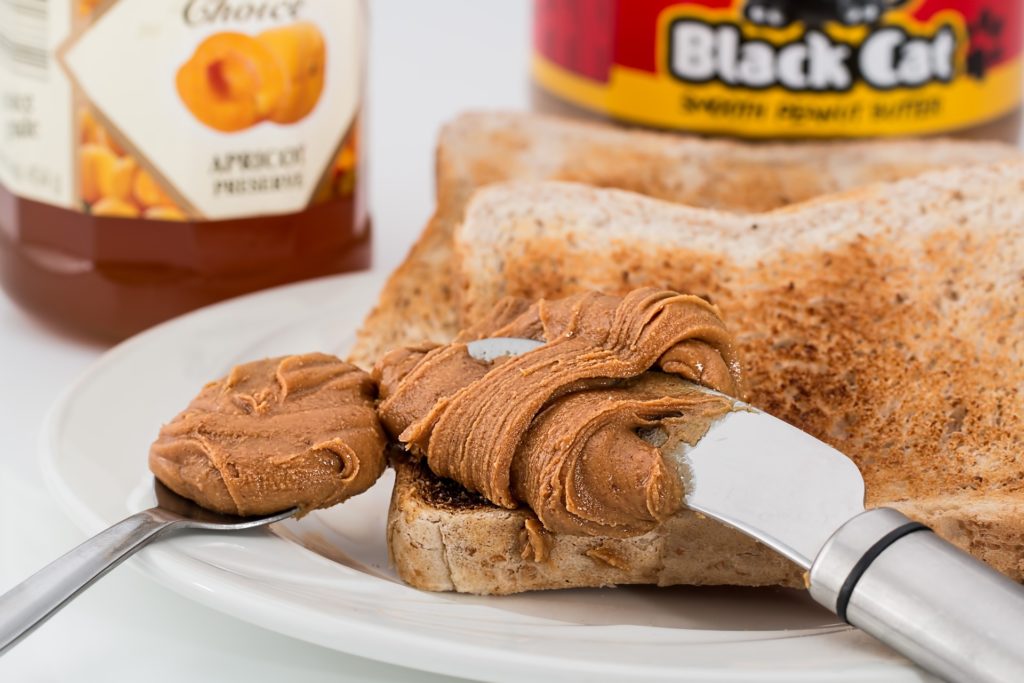
Protein: Fuel for the aging body. Are you getting enough?
Making sure you are eating enough protein throughout your day is very important, especially as you age. As the old saying goes “you are what you eat!”
Protein helps build and maintain muscles, organs, skin and bones. When you are not eating enough protein, you will start to lose strength, and your body will have trouble functioning as you need it to.
What does adding more protein to your meals look like? Watch this quick video with Katie Genge, a registered dietitian with Geriatric Rehabilitation at Juravinski Hospital & Cancer Centre to learn how to make sure you’re eating enough protein.
Protein comes from:
- Meat, fish, poultry
- Milk, cheese, yogurt
- Nuts and seeds
- Eggs, beans and legumes
Have one serving of protein at each meal. That could be 1 cup of milk, 2 tablespoons of peanut butter, a piece of meat the size of your palm, or a piece of cheese the size of your thumb.
It’s especially important to have protein at breakfast. Try adding two scrambled eggs to your toast, mixing nuts, seeds or peanut butter into your oatmeal, or if you don’t have much appetite, starting the day with yogurt or a piece of cheese.
During the day, have high protein snacks to increase your intake. Try greek yogurt and berries, peanut butter and banana, or hummus and crackers.
Keep track of your protein servings to make sure you’re getting enough. Eating enough protein can help to keep your body strong, which makes it easier to maintain your independence.
If you want more information about getting enough protein, ask your family doctor if there is a registered dietitian available through their office, or call UnlockFood.ca or 1-866-797-0000.
Tips to increase your protein intake
Add Skim Milk Powder or Whey Powder to:
• cream soups, sauces
• puddings
• milkshakes, smoothies
• milk
• hot chocolate
• coffee
• cereals
• mashed potatoes
Yogurt or Puddings (choose Greek yogurt for more protein):
• Serve with fruit and other desserts.
• Drink yogurt smoothies.
• Snack on yogurt.
• Use yogurt in dips andcasseroles.
Cheese (choose cheese with less than 20% Milk Fat (MF) or less):
• Melt on top of pastas and cooked vegetables, hamburger, meatloaf, eggs and tacos.
• Use grated or cut up cheese in potatoes, casseroles and salads.
• Snack on cottage cheese or cheese during the day.
• Add cheese to bread, bagels, vegetables, muffins, fresh fruit and crackers.
Eggs:
• Slice eggs and add to salads, casseroles and sandwich fillings.
• Add pasteurized liquid egg products such as Burnbrae-Naturegg, Gold Egg, or PC Blue Menu to smoothies.
• Buy store bought eggnogs that are high in protein and calories.
Peanut Butter, Other Nut or Seed Butters*:
• Spread on crackers, fruit or vegetables.
• *Nut-free alternatives include soy butter, pea butter and tahini.
Nuts, Seeds and Grains:
• Add to muffin or cookie mixes, ice cream and salads.
• Mix with dried fruit. Eat as a snack.
• Add wheat germ to yogurt or cereal.
Beans or Legumes:
• Have baked beans, a bean salad or bean vegetable dip such as hummus.
• Add tofu to soups, smoothies, salads, sauces and stir fries.
• Use Texturized Vegetable Protein (TVP) as a meat substitute in pasta sauces or tacos.
Meat, Fish or Poultry:
• Add to salads, soups, pasta dishes, rice, omelettes, quiche or baked potatoes.
• Spread paté on crackers or bread.
Regular dairy foods may be substituted with lactose-reduced or soy products.
